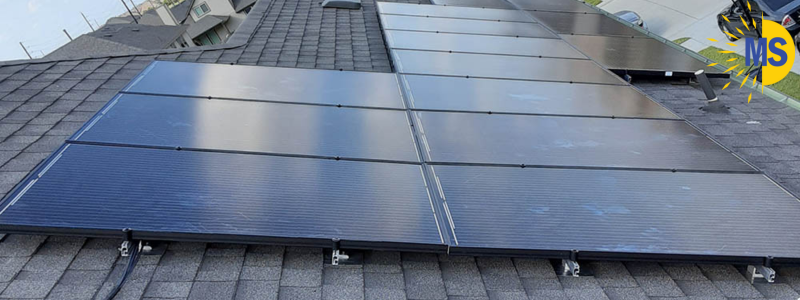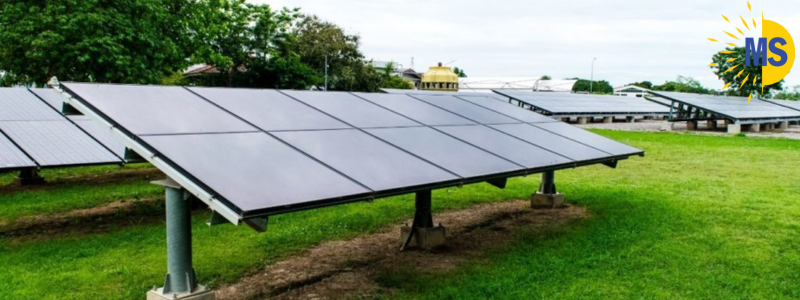How Long Do Solar Panels Last in Texas?
Picture this, you’re sitting on your porch in Houston during another scorching August afternoon, watching your electricity meter spin like a carnival ride while your AC works overtime. The monthly electric bill that arrives feels like a punch to the gut – again. You’ve been thinking about solar panels, but one nagging question keeps holding you back: “How long will these things actually last in Texas heat?”
If you’re nodding your head right now, you’re not alone. Thousands of Texas homeowners grapple with this exact concern every day. The good news? Solar panels are built to withstand far more than most people realize, even in the Lone Star State’s notorious climate.
The Bottom Line: Solar Panel Lifespan in Texas

Let’s cut straight to what you really want to know. Quality solar panels typically last 25 to 30 years in Texas, with many continuing to produce electricity well beyond that timeframe. In fact, some of the first residential solar installations from the 1980s are still generating power today.
But here’s where it gets interesting for Texas residents: while the intense heat and occasional severe weather might make you think panels would degrade faster here, modern solar technology is specifically engineered to handle these challenges.
Why Texas Weather Isn’t Your Solar Enemy

Heat Performance: Separating Fact from Fiction
Many Texans assume that blazing summer temperatures automatically spell doom for solar panels. The reality is more nuanced. Yes, extreme heat can slightly reduce a panel’s immediate efficiency – typically by about 0.4% for every degree above 77°F. However, this temporary efficiency drop doesn’t translate to faster degradation or shorter lifespan.
Think of it like your car’s engine. It might work a bit harder on a hot day, but that doesn’t mean it’s going to break down sooner if it’s well-built and properly maintained.
Texas Sun: Your Secret Weapon
Here’s something most people don’t consider: Texas receives some of the best solar irradiance in the entire country. While your panels might be slightly less efficient during peak summer heat, they’re also exposed to significantly more sunlight throughout the year compared to cloudier states.
This abundance of sunshine means your panels are generating more electricity overall, making them pay for themselves faster and providing more value over their lifetime.
What Actually Determines Solar Panel Lifespan?

Manufacturing Quality
Not all solar panels are created equal. Premium manufacturers like LG, SunPower, and Panasonic use higher-grade silicon and more robust construction methods. These quality differences become especially important in challenging climates like Texas.
When evaluating panels, look for:
- Tier 1 manufacturer status
- Strong warranty terms (25+ years)
- Positive Performance and Quality (PQP) certifications
- Track record in hot climate installations
Installation Excellence
Even the best panels won’t reach their potential lifespan if they’re poorly installed. Professional installation ensures proper mounting, electrical connections, and ventilation – all critical factors for longevity in Texas heat.
A quality installation includes:
- Proper roof attachment that can withstand high winds
- Adequate spacing for air circulation
- Professional electrical work that meets local codes
- Strategic placement to optimize both production and durability
Maintenance and Care
Contrary to popular belief, solar panels aren’t completely “set it and forget it.” While they require minimal maintenance, a little attention goes a long way in Texas.
The Texas-Specific Challenges (And How Modern Panels Handle Them)
Hailstorms and Severe Weather
Texas is no stranger to severe weather, and hail is often homeowners’ biggest concern. Modern solar panels undergo rigorous testing, including impact tests with ice balls traveling at highway speeds.
Most quality panels can withstand hail up to 1 inch in diameter without damage. For larger hail events, many homeowners find that their panels actually fare better than other roof materials.
UV Radiation Intensity
The intense Texas sun delivers high levels of UV radiation year-round. Panel manufacturers account for this by using UV-resistant materials and protective coatings that prevent degradation from prolonged sun exposure.
Temperature Cycling
Daily temperature swings – from cool mornings to blazing afternoons – create expansion and contraction cycles. Quality panels are designed with flexible materials and robust framing to handle these thermal stresses for decades.
Dust and Debris
From West Texas dust storms to East Texas pollen, airborne particles can accumulate on panels. While this might temporarily reduce efficiency, it doesn’t typically impact long-term durability. Regular cleaning or natural rainfall usually keeps panels operating effectively.
Performance Degradation: What to Expect Over Time
Solar panels don’t suddenly stop working after 25 years. Instead, they gradually produce slightly less electricity over time. Industry-standard degradation rates are typically:
- Years 1-25: 0.5-0.7% annual decline
- After 25 years: Most panels still produce 80-85% of original capacity
- After 30+ years: Many panels continue producing 70-75% of original output
For Texas homeowners, this gradual decline is often offset by:
- Excellent sun exposure maximizing production
- Rising electricity rates making even reduced solar production valuable
- Potential for equipment upgrades or additions over time
Warranty Protection: Your Safety Net
Reputable solar manufacturers offer two types of warranties that provide peace of mind:
Product Warranty (10-25 years)
Covers defects in materials and workmanship. This protects against premature failure due to manufacturing issues.
Performance Warranty (25+ years)
Guarantees minimum power output over time. If your panels degrade faster than specified, the manufacturer will repair or replace them.
For Texas installations, these warranties are especially valuable given the climate demands placed on the equipment.
Maximizing Your Solar Investment in Texas
Choose the Right Technology
Different panel technologies perform differently in hot climates:
- Monocrystalline panels generally offer the best combination of efficiency and heat tolerance, making them ideal for Texas installations.
- Polycrystalline panels are more budget-friendly but may see slightly higher efficiency losses in extreme heat.
- Thin-film panels actually perform better in hot weather but require more roof space due to lower efficiency.
Optimal System Design
Working with experienced Texas solar installers ensures your system is designed for local conditions:
- Proper panel spacing for air circulation
- Strategic placement to minimize heat buildup
- Quality mounting systems rated for local wind loads
- Appropriate inverter selection for high-temperature operation
Regular Monitoring
Modern solar systems include monitoring capabilities that let you track performance and identify issues early. This proactive approach helps ensure your panels reach their full lifespan potential.
Real-World Texas Solar Performance
Let’s look at some actual data from Texas solar installations:
Many systems installed in the early 2000s are still producing at 85-90% of their original capacity after 20+ years. Some installations in Austin, Dallas, and Houston from the late 1990s continue operating effectively today.
This real-world performance data suggests that quality solar installations in Texas often exceed manufacturer projections for longevity and production.
Financial Implications of Solar Panel Lifespan
Understanding how long solar panels last directly impacts your financial calculations:
Payback Period
Most Texas homeowners see payback periods of 6-10 years, meaning you’ll enjoy 15-20+ years of essentially free electricity.
Long-term Savings
Over a 25-year period, a typical residential solar system in Texas can save homeowners $25,000-$50,000 or more, depending on system size and local electricity rates.
Property Value Impact
Studies show that solar installations increase home values, and this boost often persists throughout the system’s operational life.
Maintenance Tips for Texas Solar Owners
While solar panels are low-maintenance, a few simple steps can help maximize their lifespan in Texas:
- Visual Inspections: Check for obvious damage after severe weather events.
- Cleaning: Rinse panels during extended dry periods or after dust storms.
- Professional Checkups: Annual inspections by qualified technicians can catch minor issues before they become major problems.
- Monitoring: Keep an eye on production data to identify performance changes.
- Vegetation Management: Trim trees or bushes that might shade panels as they grow.
The Future of Solar Technology
Solar panel technology continues advancing rapidly. New developments in materials science, manufacturing processes, and system design are extending lifespans even further. Some newer panels come with 30+ year warranties, and emerging technologies promise even greater durability.
For Texas homeowners considering solar today, this means you’re investing in technology that’s more reliable and longer-lasting than ever before.
Making the Right Choice for Your Texas Home
When evaluating solar options, consider these Texas-specific factors:
Local Experience: Choose installers with extensive Texas experience who understand local weather patterns and building codes.
Quality Components: Invest in Tier 1 panels and quality inverters designed for hot climate operation.
Comprehensive Warranties: Ensure both product and performance warranties that provide long-term protection.
Financing Options: Explore solar loans, leases, and power purchase agreements that align with your financial goals.
Utility Programs: Take advantage of net metering and other utility incentives available in your area.
Your Solar Future Starts Now
The evidence is clear: quality solar panels can provide decades of reliable, clean electricity in Texas. With proper selection, professional installation, and minimal maintenance, your solar investment will likely continue producing savings long after it has paid for itself.
The question isn’t whether solar panels can handle Texas weather – it’s whether you’re ready to start saving on your electricity bills while contributing to a cleaner energy future.
At Mianro Solar, we’ve helped thousands of Texas families make the transition to solar energy. Our experienced team understands the unique challenges and opportunities of solar installation in the Lone Star State. We use only premium components backed by industry-leading warranties, and our installations are designed to deliver maximum performance and longevity in Texas conditions.
Don’t let another scorching summer or sky-high electric bill pass by. Contact Mianro Solar today for a free consultation and discover how solar panels can provide decades of clean, affordable electricity for your Texas home. Our solar experts will assess your property, explain your options, and design a system that’s built to last in the Texas heat.
Ready to start your solar journey? Call Mianro Solar at 8444640003 or visit our website to schedule your free solar assessment. Your future self will thank you for taking action today.

